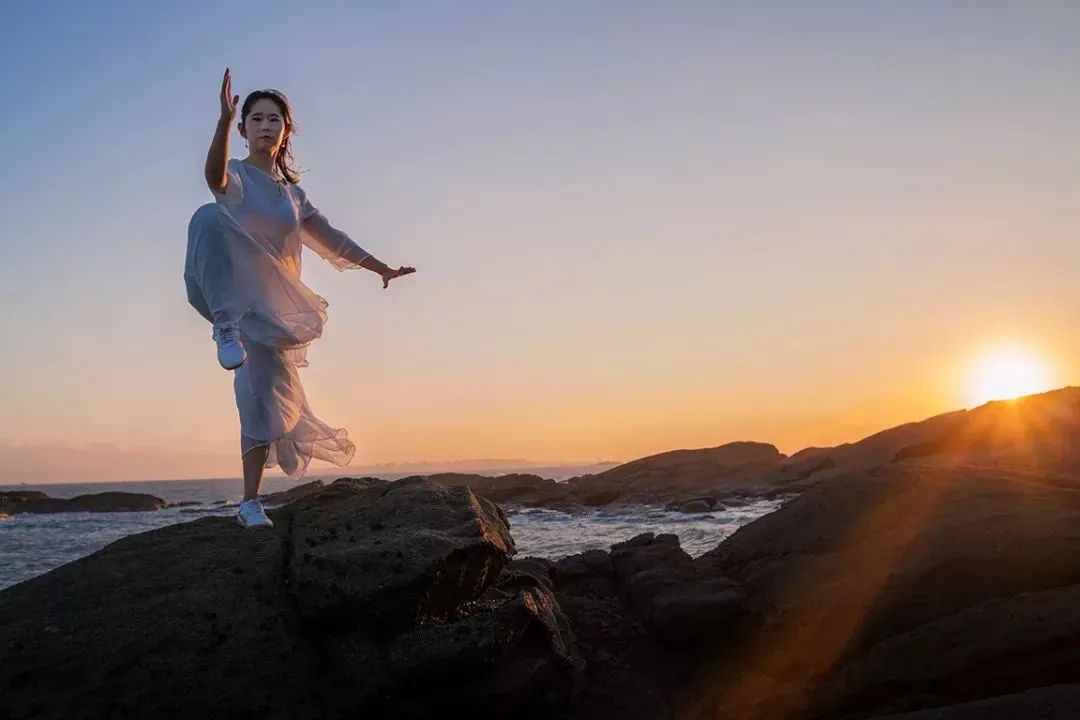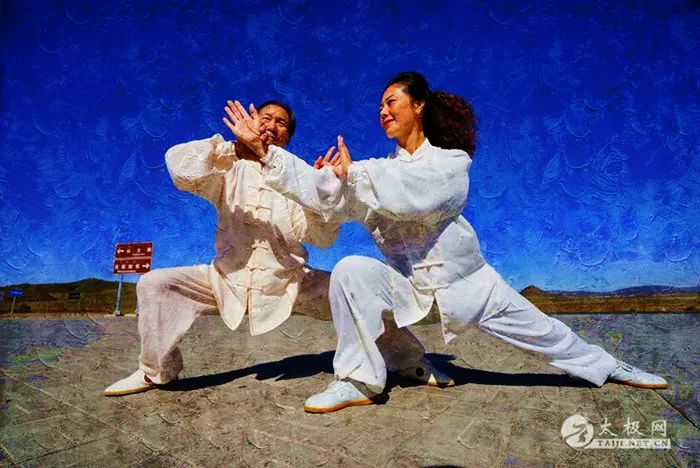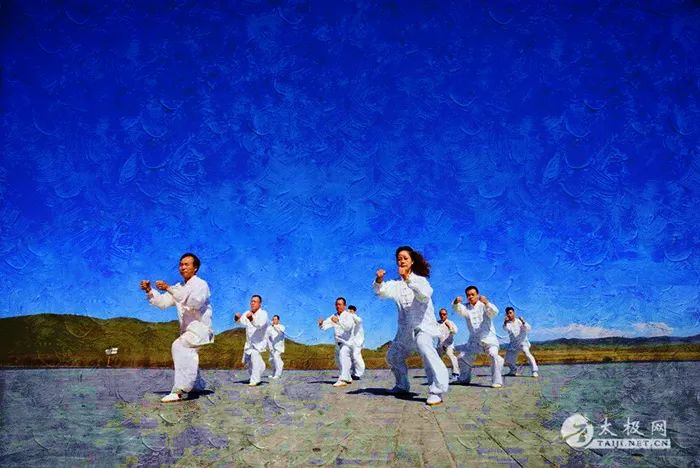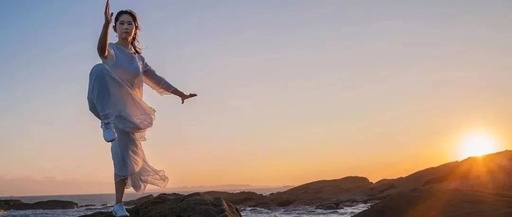 The Tai Chi step involves a unique balance of weight distribution between the left and right feet, with corresponding oppositional movements. Regardless of the posture changes, one must maintain a stance that is “as stable as a scale and as agile as a wheel.”During the stepping process, the upper body should always remain upright, centered, calm, and relaxed. As the saying goes: “Bending down and bowing, even with skill, does not elevate one’s stance; leaning forward or backward makes it hard to rise.” It is also important to avoid stepping in a straight line where the heels of both feet are aligned; the distance between the heels of the front and back foot should be approximately shoulder-width apart to enhance the stability of the lower body. The stride length in Tai Chi should be just right; if it is too large, one cannot adapt quickly to changes, leading to a passive loss of balance. If the stride is too small, it hinders the sinking of the body and the stability of the center of gravity.
The Tai Chi step involves a unique balance of weight distribution between the left and right feet, with corresponding oppositional movements. Regardless of the posture changes, one must maintain a stance that is “as stable as a scale and as agile as a wheel.”During the stepping process, the upper body should always remain upright, centered, calm, and relaxed. As the saying goes: “Bending down and bowing, even with skill, does not elevate one’s stance; leaning forward or backward makes it hard to rise.” It is also important to avoid stepping in a straight line where the heels of both feet are aligned; the distance between the heels of the front and back foot should be approximately shoulder-width apart to enhance the stability of the lower body. The stride length in Tai Chi should be just right; if it is too large, one cannot adapt quickly to changes, leading to a passive loss of balance. If the stride is too small, it hinders the sinking of the body and the stability of the center of gravity.
1
Seated Leg and Waist Rotation
The center of gravity shifts slightly back from the Yongquan (Kidney 1) point on the right foot to the right heel, the waist turns to the right, the right hip is drawn in, and the right foot is extended outward, gradually settling the weight fully on the right leg, with 100% of the weight on the right foot. The right knee should align with the right toes, and the hips should be level with the heels.
2
Movement Without Stillness
When pivoting on the right heel, the left hip should come in. As the right foot touches the ground, the left heel should lift and extend outward to ensure that the body movement, footwork, and actions are coordinated.
3
Shoulder and Hip Alignment
When the waist turns to the right, the shoulders should also turn, and the hips should simultaneously rotate to the right. If the waist and shoulders turn but the hips do not, it results in a twisting motion, hence it is more accurate to say “turning the waist and hips” rather than just “turning the waist.”
4
Internal Force Transition
The internal force generated by the rightward rotation of the waist and hips travels through the legs and knees to the heels, spiraling into the ground like a drill bit. Once the right leg is stable, stepping with the left foot can be light, steady, and agile.
5
Shoulders Level
During the rightward rotation of the waist and hips, the right shoulder should not drop lower than the left shoulder to avoid disrupting the upright posture.

6
Point of Lift and Drop
When lifting the left foot, do not push off the ground; avoid dragging the foot along the ground or lifting the entire foot at once. Instead, the outer edge of the heel should lift first, followed by the inner edge of the foot, as if gently pulling the leg out of mud. The point of lift and drop is one of the principles of stepping in Tai Chi.
7
Ankle and Leg Rotation
When lifting the left foot, the left leg (knee) should internally rotate; when extending the left foot forward, the left leg (knee) should externally rotate. The degree of rotation should be much smaller than that of the wrist and arm, and should not be overly pronounced.
8
Foot Height Control
The left foot should not be lifted too high to avoid disturbing the center of gravity; it should not rise more than a fist’s height off the ground, but should also not drag on the ground, with the toes naturally drooping.
9
Relaxing the Supporting Leg
When lifting the foot and extending the leg, the thigh should lead the calf, and the left ankle, knee, and leg muscles should be relaxed and natural.

10
Arc-Shaped Foot Movement
When lifting the left foot, it should not move straight forward but should extend slightly closer (not touching) to the right ankle, following an arc shape, but without exaggerating the curvature.
11
Gentle Step Out
The right knee should be slightly bent, using minimal force to extend the left foot forward. Lightly lifting and dropping is another principle of stepping in Tai Chi.
12
Gathering the Hips
When extending the left foot, the hips should be gathered; do not push or twist the hips, as this would affect the upright posture.
13
Relaxing the Hips
When extending the left foot, it should begin simultaneously with the leftward rotation of the waist and hips. The left hip should relax, allowing the ligaments around the hip joint to loosen, making the knee flexible and the steps light; additionally, relaxing the hips allows for a broader stride, ensuring the distance between the feet in a left bow stance.
Source: Internet, reposted for sharing purposes; please contact for copyright issues.


